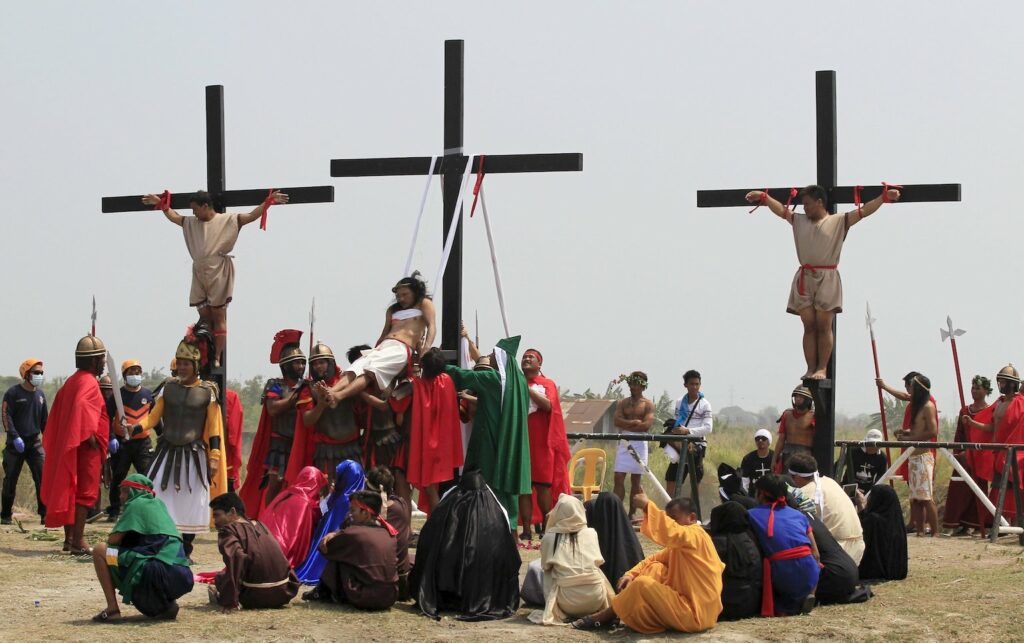This year is a significant event in the faith lives of Filipino Catholics throughout the world. This year we celebrate the quincentenary of Christianity in the Philippines. It was 500 years ago, in 1521, that the Portuguese explorer Ferdinand Magellan, representing the Spanish Empire, arrived in the Visayan region of the Philippines.
Thus began the process of European colonization, which eventually led to the establishment of Christianity. To this day, the Philippines remains the only major predominantly Catholic nation in Asia.
The background that led up to this monumental event is worth remembering. When news of Christopher Columbus’ discovery of the Americas in 1492 reached Europe, a fervor and thirst for treasures, fame and potential Christian converts took hold of those empires that were navigationally competent to expand beyond their borders.
The Spanish and the Portuguese empires were rivals, so the 1494 Treaty of Tordesillas essentially divided the world into two halves: the Americas and Asia. The Spanish Empire was granted exploration rights to the Americas, and the Portuguese Empire was granted these rights to Asia.
Enter the Portuguese navigator and explorer Ferdinand Magellan (1480-1521). From 1505-1513, he sailed for his own Portuguese Empire to the eastern coasts of India and the western coasts of Africa. But after disputes with his own King Manuel over rewards for his services, he moved to Seville, Spain, and switched allegiance to King Charles I.
Based on his interpretation of the Treaty of Tordesillas, Magellan convinced the Spanish king that the exploration rights to the Spice Islands or Moluccas (located just northeast of Indonesia and south of the Philippines) was debatable. Of course, there was only one way to find out: The king would need to send someone out there right away and claim it for the Spanish Empire, before the Portuguese arrived there first.
Thus on Sept. 20, 1519, the most ambitious exploration began with the goal of not only claiming the Spice Islands, but also circumventing the entire world, all for the glory, fame and wealth of the Spanish Empire.
On March 31, 1521, Easter Sunday, Magellan and his crew celebrated Mass on a small island off the coast of Leyte, just northeast of Cebu in the southern region of the Philippines. There was much to celebrate, since two weeks prior to this Mass, during the week of March 20, his fleet had reached the shores of these islands.
Their discovery simultaneously began the process of converting the indigenous people to the Christian faith. In large part, their strategy was straightforward: If they could convince the chiefs of each island to convert, then everyone else would follow suit. So Magellan set his sights to the island of Cebu (located to the left of Leyte) where Chief Humabonreigned.
At first, both leaders exchanged gifts, with Magellan offering 13 pieces of Spanish iron and Humabon offering 10 pieces of the island gold. Conversations about whose God was more powerful transpired, but it was the performance of a miracle that finally convinced the chief to consider baptism.
His grandson had been ill for two years, and after the accompanying chaplain baptized the young man, resulting in his cure, Humabon was convinced and asked to be baptized himself. And as predicted, over 2,200 of his people were baptized afterward.
With the success of establishing a working relationship with the island inhabitants of Cebu, it didn’t take long for Magellan to set his sights on more ambitious and expansive goals by considering the colonization of the entire archipelago, comprising of over 4,400 islands and islets.
However, in his attempts to expand beyond Cebu and other neighboring islands, he eventually was struck by a spear and died during a battle. Alas, Magellan never completed his goal of circumventing the entire world, but his crew eventually accomplished this significant feat in his name.
The quincentenary that marks the introduction of Roman Catholicism in the Philippines cannot go unnoticed, given the impact and influence that Catholicism has and continues to have in the everyday lives of Filipinos.
Today, 8 in 10 Filipinos profess Catholicism as their faith. After Brazil and Mexico, the Philippines boasts the third largest number of Catholics, followed by the United States.
Even beyond numbers, it is easy to experience and appreciate how the Catholic faith has been integrated within the myriad social and spiritual practices that mark the everyday lives of Filipinos.
These include but are not limited to: the sacramental practices that are fostered within the family systems; the countless devotions to the saints, especially to Mary, as expressed through daily rosary recitations, novenas and pilgrimages; the sequence of Advent masses known as Simbang Gabi (“Night Masses”) that continues to grow in popularity throughout the U.S.; and the active participation of so many Filipinos in their local parish liturgies, pastoral outreach programs and diocesan social events.
To help celebrate this milestone, a website has been created that lists all the quincentenary festivities that are happening in U.S. dioceses throughout the next 12 months (www.1521stories.com). A national celebration is being planned to cap off this year during the weekend of March 18-20, 2022.
Indeed, Filipino Catholics not only pray in thanksgiving for the gift of our Catholic faith, but we also look forward to the next 500 years!
—
Father Ricky Manalo is a Paulist priest, composer, theologian, author and is the co-author of a new book on Filipino American Catholicism, “A Treasured Presence: Filipino American Catholics.” He resides at St. Paul the Apostle Church in New York City.

